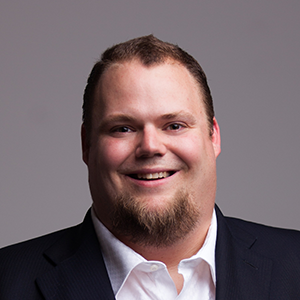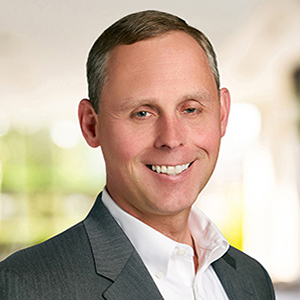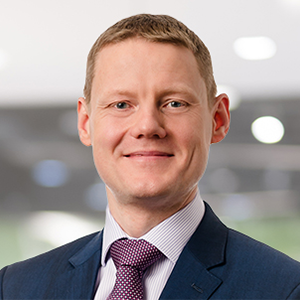Q: What do enterprises need to understand about threat prioritization for vulnerability management? Why has that become so important?
Darron Gibbard: No IT department, not even the largest ones, has enough staff to fix all the vulnerabilities within their IT environment, especially with the dearth of infosec professionals in the industry. Consequently, organizations must prioritize their remediation work by identifying their most critical vulnerabilities and fixing those first.
There are three factors enterprises need to understand about threat prioritization.
First, visibility is critical. Enterprises must be able to detect all of their IT assets across their on-premises IT systems, mobile devices and public, private and hybrid cloud instances. Without a comprehensive and continually updated inventory of IT assets, an organization can't expect to properly prioritize the remediation of its most critical vulnerabilities.
Second, automated correlation of the thousands of disclosed vulnerabilities against an organization's IT asset inventory is key. It's impossible to do this manually, given the fact that new vulnerabilities are disclosed every day, and that the level of risk associated with a particular vulnerability can suddenly change months or years after its disclosure if, for example, it's packaged in an exploit kit.
This continuous correlation process gives infosec teams a clear view at all times of all the vulnerabilities impacting their IT assets. Many organizations lack this clarity. According to Verizon's Data Breach Investigation Report for 2016, the top ten known vulnerabilities accounted for 85 percent of successful breaches, although patches were available for all of them.
Finally, once an organization has a complete inventory of IT assets and it has identified their vulnerabilities, it can assess where the highest risks to its business lie, using a variety of criteria, such as: the severity of the vulnerability, how many people within the organization would be affected if it's exploited, and the support requirement for deploying the relevant patches for it.
In short, if enterprises can understand where the highest risk lies within their environments at any given time, they will shrink the possibilities of suffering a successful attack by addressing those threats first.
Q: What do C-level executives want to know about vulnerability management reporting?
Gibbard: Humans are inherently visual. For those who are not technically savvy, like some C-level executives, a good dashboard or visualization around security preparedness can help bridge gaps and secure support over time. Visualizations also make it easier to explain complex scenarios, prioritize where efforts should go, and display how effective those actions have been over time. C-level executives often want to know what threats they face and which are being addressed. Visualization also makes it easier to show these results both internally within the IT department and to other stakeholders within the business.
C-level executives are also concerned with the overall strategy and how remediation efforts are trending towards achieving those goals. In a constantly changing landscape of threats that can lead to breaches, bad press, lawsuits and more, infosec teams need to constantly keep the executive team updated on current and evolving strategies to secure enterprises from rootkits, ransomware and such. By correlating continuous external threat data with asset inventories, security teams can better report prioritization strategies and the progress towards achieving the goals of those strategies.
For C-level executives, the regulation and compliance landscape is another key priority. For example, all companies and public sector bodies will have to implement data protection policies that comply with the General Data Protection Regulation (GDPR), which goes into effect across all European Union member states in May 2018. The rules here govern all organizations that hold customer data for European citizens, so almost all companies will have to conform to GDPR.
Q: Why is being at Black Hat Europe important for Qualys?
Gibbard: 2016 is the year of the platform for Qualys. We've transitioned from being a leader in cloud-based security and vulnerability management to becoming a leading cloud-based platform provider of integrated solutions across IT security and compliance.
Qualys has integrated 10 security and compliance applications into one platform, and this simplifies the management of IT security and compliance. We've added new compliance tools like Security Assessment Questionnaire, which helps companies ensure their third-party supply chains and partner ecosystems are as secure as their own environments. European companies which must comply with privacy and geographic regulations may be interested to know that our Private Cloud Platform (PCP) family of self-contained, pre-configured appliances offers the security and compliance services of the public cloud Qualys Cloud Platform within a customer's or partner's data center, keeping sensitive data on-premises. Our newest addition to this family of products is the PCP-A, designed for medium-size companies.
We're also excited for the conference because as compliance becomes an important issue for European companies, we're uniquely equipped to help them handle these requirements in the age of cloud computing. Our cloud-based architecture allows companies to better track their assets and vulnerabilities on premises, in the cloud and on endpoints. For instance, the goal of GDPR is customer data protection, but if companies can simply manage vulnerabilities across the assets, which hold this data, they come a long way towards both maintaining the necessary security posture and achieving the end goal of these regulations.









